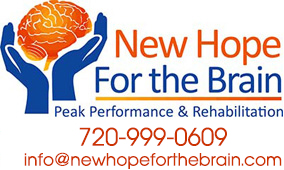 BIOFEEDBACK
BIOFEEDBACK
Biofeedback is a process that involves measuring and providing visual or auditory feedback regarding our body’s physiological functions. During a biofeedback session sensors are used to track various physiological parameters such as heart rate, blood pressure, skin temperature, brain waves and muscle tension. These measurements are then presented to the individual in real time.
By providing real time feedback about bodily functions, biofeedback enables individuals to enhance their awareness and gain conscious control over their physiological responses.
Types of Biofeedback:
Electromyography (EMG): This type of biofeedback focuses on monitoring muscle activity and tension. It is commonly used to alleviate conditions such as muscular pain, tension headaches, and bruxism.
Thermal Biofeedback: Thermal biofeedback involves monitoring skin temperature and can be useful in managing conditions such as migraines, Raynaud’s disease and stress-related disorders. It teaches individuals to regulate blood flow and body temperature.
Heart Rate Variability (HRV): HRV biofeedback focuses on tracking and controlling the variability in time intervals between successive heartbeats. This type of biofeedback helps individuals manage stress, anxiety and cardiovascular conditions.
Capnometry: Capnomety biofeedback measures and provides feedback of a person’s carbon dioxide (CO2) levels. It is the process of monitoring the concentration of CO2 in exhaled breath. In capnometry biofeedback, individuals are trained to regulate their breathing patterns based on the real time feedback they receive about their CO2 levels. By learning how to control their breathing and adjust their CO2 levels, individuals improve their overall physiological and mental well-being. This technique has been used in stress reduction, anxiety management, performance enhancement and respiratory therapy. Capnometry biofeedback harnesses the power of breath and provides individuals with a practical approach to managing stress and enhancing overall well-being.
Biofeedback of Cellular Stress: The human body possesses an incredible ability to heal itself. From minor cuts and bruises to more serious injuries, our bodies have an innate healing mechanism that works tirelessly to restore health and well-being. This natural healing process is governed by a complex network of biological mechanisms that enable the body to repair tissues, fight off infections and restore balance.
Cells constantly face various challenges that can disrupt their regular functioning. One such challenge is cellular stress, which arises due to exposure to internal or external factors that disturb normal cellular homeostasis. Cellular stress can result from a multitude of causes, including physical, chemical and biological factors. Physical stressors may include changes in temperature, pressure, or even mechanical injury. Chemical stressors encompass exposure to toxins, drugs, or imbalances in essential nutrients, while biological stressors involve viral or bacterial infections. Additionally, emotional or psychological factors such as chronic stress or trauma can also contribute to cellular stress.
Cellular stress serves as a critical biological response to internal and external challenges faced by cells. Its consequences include interfering with the body’s natural healing process. Biofeedback of cellular stress is accomplished using our Non-Linear Biofeedback System described in the section entitled “Our Technology”.
Biofeedback has been effectively applied in improving symptoms of a wide range of conditions such as hypertension, migraines, insomnia and attention disorders by reducing interference in the natural healing process. It complements conventional medical treatments and offers a holistic approach to healthcare.
In an era where stress, chronic diseases and mental health disorders plague many individuals, biofeedback offers a compelling solution to take control of our own bodies and minds. It harnesses the power of self-regulation by providing real time feedback on physiological responses, enabling users to modulate their bodily functions and promote overall well-being. As this field continues to evolve, biofeedback holds immense potential to empower individuals to improve their quality of life and achieve optimal health.
NEUROFEEDBACK
Neurofeedback, also known as brainwave biofeedback, utilizes real-time displays of brain activity to train individuals to self-regulate their brain function. Through the use of sensors placed on a person’s scalp, neurofeedback equipment records and analyzes brainwaves, providing immediate visual or auditory feedback to indicate when the brain is operating within a desired range.
Neurofeedback is used to help individuals improve the shape of the brainwave as well as the frequency and amplitude of their brainwave patterns. Alterations in brainwave patterns have been linked to various mental health conditions, including depression and anxiety. The goal of Neurofeedback is to stabilize these disrupted patterns and promote optimal brain functioning.
Neurofeedback is also used to improve cognitive function. By targeting specific brainwave frequencies associated with enhanced cognitive functions, such as focus and memory, individuals can potentially enhance their cognitive abilities. This application is especially useful in the case of Traumatic Brain Injury (TBI).
Neurofeedback offers tremendous promise in the fields of mental health and cognitive enhancement. By allowing individuals to gain insights into and modify their own brainwave patterns, this non-invasive therapy presents an innovative approach to addressing mental health conditions and optimizing cognitive functioning.

